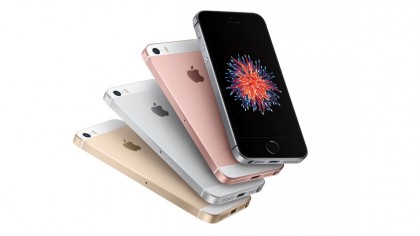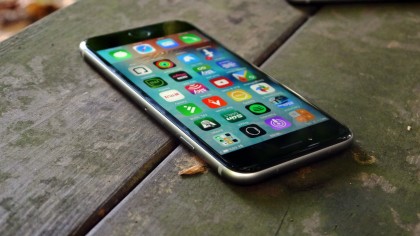iPhone SE vs iPhone 6S
The iPhone SE is small and stylish, but can it match the iPhone 6S?

Apple has announced a new phone, but this isn't the iPhone 7. It's a smaller, cheaper handset dubbed the iPhone SE.
It may not be a flagship, but this is Apple we're talking about, so the iPhone SE is still a premium device. In fact, according to Apple it's the most powerful 4-inch phone ever made.
It's unusual in all kinds of ways, from being the first cut-cost iPhone since 2013's iPhone 5C, to being the first iPhone ever with a smaller screen than its immediate predecessors.
With a smaller display it's a different beast to the iPhone 6S, positioned more to take on affordable Android rivals than flagships. Nevertheless, it has a premium appeal and surprisingly high end specs. Plus, the compact form factor will appeal to some, so just how do these two smartphones stack up? We've put them head to head to show you.

Key features
The iPhone SE is all about its screen and its price tag. With a 4-inch display it's the smallest phone Apple's made in years. It's also a lot more compact than most Android handsets, which gives it a major selling point for anyone who thinks a screen should be small.
The price hardly puts it in budget territory, but it's undeniably cheap by Apple standards and the hope is that would-be-buyers will see it as an alternative to the many Android mid-rangers around, especially as the design is far higher-end than you typically see at the mid-range.
The iPhone 6S on the other hand is a no-compromise flagship, so it's packed full of features, including a larger 4.7-inch screen with innovative pressure-sensitive 3D Touch smarts.
Sign up for breaking news, reviews, opinion, top tech deals, and more.
Design
The iPhone SE has a premium design, with a metal shell, just like the iPhone 6S. But the actual look is quite different. In fact the iPhone SE is identical to the iPhone 5S, rather than Apple's latest flagship.
The edges are less rounded than the 6S and it has a two-tone colour scheme, with bars at the top and bottom in a different colour to the main body. It's also a little chunkier.
The iPhone SE comes in at 7.6mm thick, while the 6S is 7.1mm thick. But both phones are available in Apple's typical range of colours, including gold, silver, space grey and rose gold.
Apple's new 4-inch phone is lighter at 113g, while the 6S tips the scales at 143g.

Screen
This is one of the biggest differences between the iPhone SE and the iPhone 6S, as while the 6S has a 4.7-inch screen, the iPhone SE has a significantly smaller 4-inch one.
It can't be overstated how much difference that makes. The iPhone 6S is hardly massive and can just about be used one-handed, but even the smallest hand should be able to comfortably operate the iPhone SE. The size also makes it even more pocket friendly than Apple's slim superphone.
On the other hand, you have a smaller canvas for consuming apps and media on, you'll have to scroll more on web pages and the keyboard will be more cramped.
For most people the iPhone 6S probably strikes the better balance, but anyone who's lamented Apple's move to bigger screens has reason to get excited about the iPhone SE.
The actual pixel density of the two screens is the same, with both coming in at 326 pixels per inch. The main difference beyond the size is that the iPhone 6S has 3D Touch, allowing it to tell between different levels of pressure.
Sadly, this feature is absent from the iPhone SE, but it's a feature that few phones use and that's still finding its feet, so you probably won't miss it too much.
James is a freelance phones, tablets and wearables writer and sub-editor at TechRadar. He has a love for everything ‘smart’, from watches to lights, and can often be found arguing with AI assistants or drowning in the latest apps. James also contributes to 3G.co.uk, 4G.co.uk and 5G.co.uk and has written for T3, Digital Camera World, Clarity Media and others, with work on the web, in print and on TV.